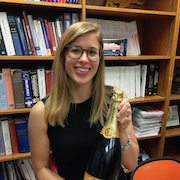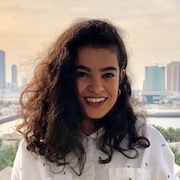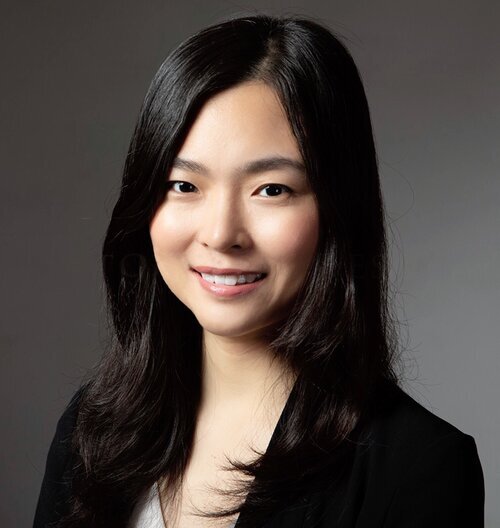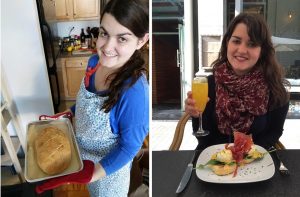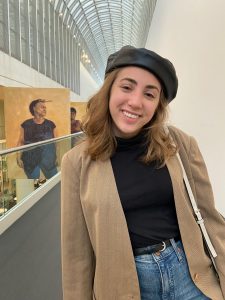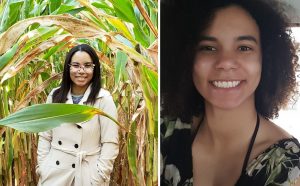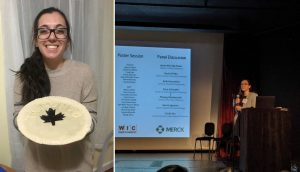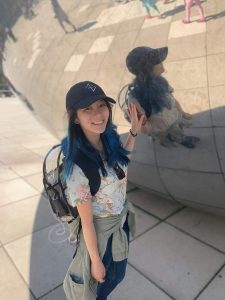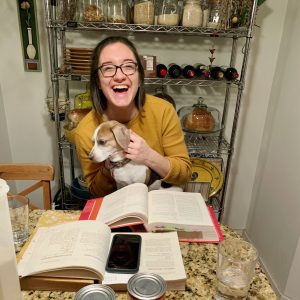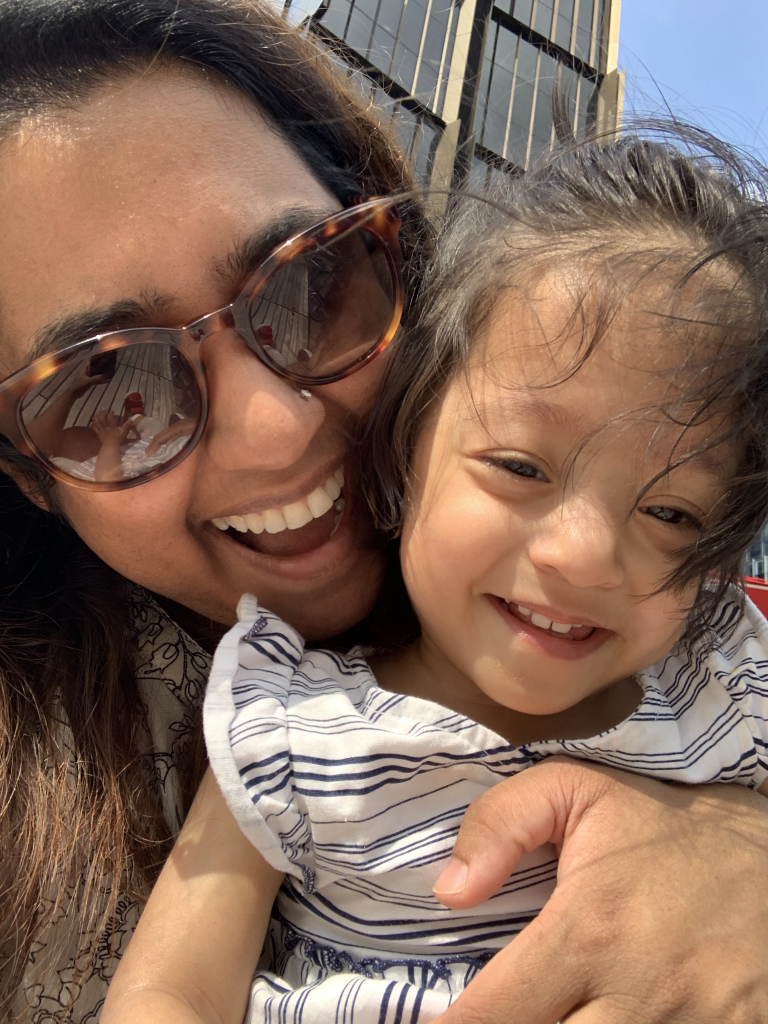
Deena Al Mahbuba is a senior graduate student in Professor Laura Kiessling’s group. Deena began her PhD at the University of Wisconsin Madison and switched groups in her second year to move with Professor Laura Kiessling to MIT in 2017. At MIT, Deena conducts stem cell research aimed at understanding the role of heparan sulfate in human neural development. During her graduate studies, Deena gave birth to her daughter, Aara, at 24 weeks in December 2019. She has since been balancing thesis research, parenthood, and the pandemic. We sat down with Deena to hear more about her scientific and personal journey.
As a child, Deena was a voracious reader, a pastime encourage by her family. Her mother in particular was a large inspiration in Deena’s life. Deena remembers her mother as a woman with an insatiable appetite for learning, always interested in studying something new. In fact, she returned to university for a masters’ degree when her own children were in college! Deena’s older brother also played a pivotal role. He passed along his personal library of over 2000 volumes to Deena when he left for medical school, and encouraged her to read widely.
This family environment where learning and exploring were central tenets encouraged Deena’s interest in science. An early pivotal step on this path was Deena’s decision to pursue a masters in immunology after finishing her bachelor’s. This was her first research experience, as undergraduate research is less accessible in Bangladesh–where Deena is from–than it is in the US, and Deena was hooked. Afterwards, she applied for a Commonwealth Scholarship and completed a second masters degree at University College London in the United Kingdom. It was there that she came to two important conclusions: firstly, she didn’t enjoy the animal studies requisite for her immunology research and secondly, she wanted to continue research and pursue a PhD.
Towards those goals, Deena moved to Wisconsin where her husband Murshid was already working towards his doctorate. She joined the Senes lab, a structural biology lab, where she relished her return to basic, fundamental biology research. It was a relatively small lab, and she spent two years there, her work culminating in a first author paper. During her time in the group, her interests began to drift towards developmental biology. It was then that her husband’s advisor decided to move to MIT, giving Deena the opportunity to finish her PhD in the Kiessling group and pursue a developmental biology glycoscience project. While at first it was difficult to join a new lab and start a new project, Deena persevered. “I must say, I made some really good friends in the Kiessling lab,” says Deena, “I’m very thankful for that. At the end of the day, it was a good decision.”
Deena describes MIT as a dynamic campus, both in terms of science and the people. “It’s very cosmopolitan, so it’s very welcoming to an international student like me,” she notes. Outside of the lab, Deena has been active in the MIT Bangladesh Student Organization. She also enjoys participating in the MIT Glycobio Literature Club, a reading and discussion group across several labs. Still a lover of reading, she also participates in a book club with several friends and loves to spend time collecting books, especially when she travels home to Bangladesh.
While her husband and daughter are here with her in Boston, the majority of Deena’s family live in Bangladesh. Thinking about the last two years, Deena reflected on the challenges of living so far from family during such a turbulent time. While her father came to visit when she was pregnant, he was the last member of her and her husband’s families who visited before their daughter Aara was born. In hindsight, Deena muses now, “A PhD, a premature baby, and a pandemic—that’s an abnormal experience! At every point I thought this is the worst that can happen to me, but after the next challenge, it’s like that was easy.”
Being a mother of a preemie in the best circumstances is difficult, but being both a graduate student and living through a pandemic far from family makes the experience almost unimaginable. Deena credits her friends from lab with keeping her sane and lifting her up during her early months as a mother of a NICU baby and during the pandemic. Laura Kiessling, Deena’s advisor, was also incredibly supportive, suggesting that Deena read about the fetal development happening inside her. “I learned so much about how the embryo grows; I knew so little even though I [am] a stem cell biologist,” recalls Deena, whose project explores glycan structure and function during neuronal differentiation. “I learned that more than 100,000 neurons can grow every minute, compared to 21 days for me to run a differentiation experiment in lab… and sometimes [the cells] just die!”
Having a child also changed Deena’s perspective on life, something that Laura had discussed with her during her pregnancy. Deena recalls Laura telling her not to worry, and that everything would be okay, her priorities would just shift. As one of several mothers in the Kiessling group, Deena relied on their guidance and support, as well as the small community of other graduate student and postdoctoral mothers in the department. She describes the community as particularly supportive, a group that will try to help even if they don’t know much about you.
Deena is enjoying watching her baby grow up around science. She describes Aara picking up a paper about growth factor binding at the dining room table and pretending to read it, like she sees Deena doing as she works at home. Deena thinks that her identity as a scientist is central to her parenting philosophy. When making decisions about Aara, Deena and Murshid approach the decision as scientists, really preferring to make an evidence-based, data-driven decision. “Both my husband and I are in science so it really affects the way we raise Aara, but Aara can be anything she wants. She can be a scientist or a singer!” says Deena.
Now wrapping up her graduate studies, Deena spends her days writing or running experiments, and her evenings with her baby. While Deena is not sure yet what comes after graduate school, she is excitedly looking forward to starting her professional career working at the interface between stem cell biology and neurological diseases. Deena is excited to finish her thesis and finally share her accomplishments with her family and friends, in person.

